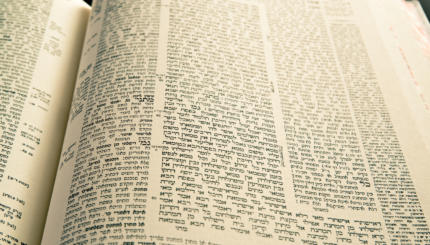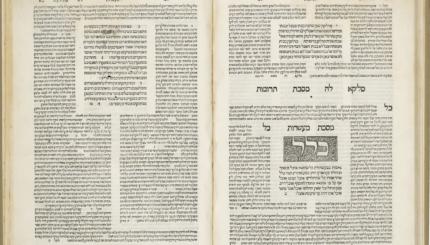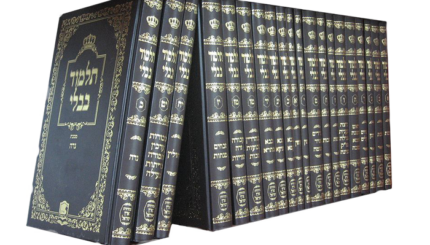Although the Torah is wonderfully rich in its narratives, poetry, and laws, it is inadequate as a law code. For example, Deuteronomy decrees that if a man divorces his wife and she remarries and the second marriage ends in divorce or death of the husband, the first husband is forbidden to remarry her (24:1-4), but nowhere does the clearly define how the divorce is to be effected or what is to be written in a bill of divorcement.
Torah She’b’al Peh, or Oral Torah
Nevertheless, Jews sought to determine from the Torah all of the details of a complete legal system. As tradition describes it, from the time of the very giving of the written Torah, Moses already had received a companion Torah she’b’al peh (oral Torah), which he proceeded to teach to the people of Israel during their travels in the desert. It is clear that from the very beginning, Jews needed additional authoritative law, or halakhah (“going,” or “path”), to govern regular life. These halakhot (plural) were passed on through the generations, and during the period of the Second Temple (fifth century BCE-first century C.E.), halakhot, both those developed through custom and those derived from interpretation of the Torah, were collected and transmitted. Following the destruction of the Temple in 70 C.E., the earliest rabbis gathered and transmitted the laws learned from earlier sages.
During the first two centuries, the rabbis apparently worked out how, as an educated leadership, they were to transmit and develop new law through agreed upon rules of interpretation. Much of our understanding of this period comes from later texts which were not intended as histories and which probably should not be relied upon for history. Nevertheless, it is clear that by the close of the second century, the rabbis had agreed on enough of the basics that their various opinions could be compiled and compared to each other. At this point, around the year 200 C.E., Rabbi Judah the Patriarch, used his unique position as a leader of the Jewish people who actually got along with the Romans to publish the first major Jewish work following the Bible, a study book of rabbinic law called the Mishnah (literally, teaching or repeating).

Help us keep Jewish knowledge accessible to millions of people around the world.
Your donation to My Jewish Learning fuels endless journeys of Jewish discovery. With your help, My Jewish Learning can continue to provide nonstop opportunities for learning, connection and growth.
The Mishnah
The defined the basic contours for later discussion of Jewish law. The name, which means “repeating,” reflects that the book was designed for oral transmission and memorization, as a rabbi would repeat each tradition for his student. But the orality of the Mishnah is not just a matter of its form; the content is composed almost entirely of the statements of different rabbis, juxtaposed against and in conversation with the varying opinions of other rabbis. From the Mishnah onward, all of the literature of the Torah she’b’al peh is more than just “oral Torah”; in fact, a more descriptive translation of the term might be “conversational Torah,” because it is the conversation and the interaction of different ideas that defines the essence of what eventually became known as the (study).
During the three or four centuries following the Mishnah’s publication, the rabbinic sages whose work was eventually compiled in the documents which we call Talmud, analyzed each halakhah in the Mishnah. They compared the various statements of a rabbi to determine how his different positions could be seen as parts of a consistent legal theory. They harmonized the opinions in the Mishnah to other early opinions that were not included in the Mishnah. They tried to show the relationship between the various opinions in the Mishnah to their presumed derivations from Scripture.
Everywhere and throughout the Talmud, the rabbis worked with several basic assumptions. Given a controversy between two early sages, the goal was not to determine according to whom was the practical law; the goals was to make sense of each opinion. This underlying assumption that opinions are not simply fickle choices but the rational decisions of sages confronting differing ways of describing legal reality, is the hallmark of the Talmudic process. The rabbis expressed this concept succinctly: “both these and those are the words of the living God” or, as it may also be translated, “both these and those are the living words of God.”


